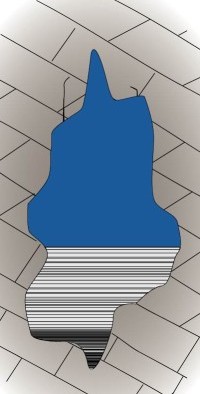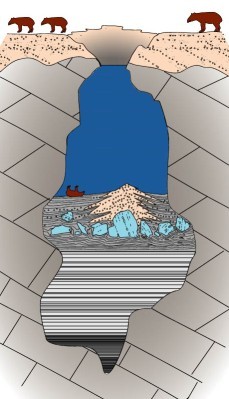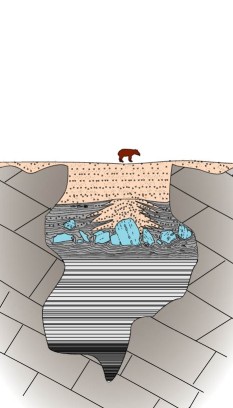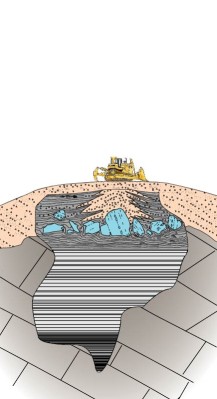As mentioned in the introduction, the origin is
problematic. One of the difficulties is how (or whether)
the site could have been both a death trap and a habitat
for aquatic animals, particularly large ones. The clays
are layered, and not bioturbated as would be the case if
animals were mired in a sticky material. Many bones are
articulated and none have been gnawed or scattered by
scavengers.
The diagrams below were prepared as part of a poster
presentation at the 2005 Tennessee CritterFest at the
Nashville Bicentenial Mall. The original version showed a
partially empty Stage 2, with a substantial free-fall
into the water. A large empty space, a cavern above a
lower water level would explain the presence of cave
onyx, blocks of which were found in the clays. However,
in that case a visible pool of water might not have been
present, a likely attractant to animals during dry
seasons. It is also possible the water level would rise
and fall with the seasons. Not shown is the source of
sediment and debris-laden surface waters. These may have
cascaded directly into the hole, or entered via a sink
some distance away.
A high-resolution gravity study conducted by George
Whitlaw (see Links)
indicates the structure may be more complex than shown
here, and suggests several partly merged bodies of
sediment are present.



